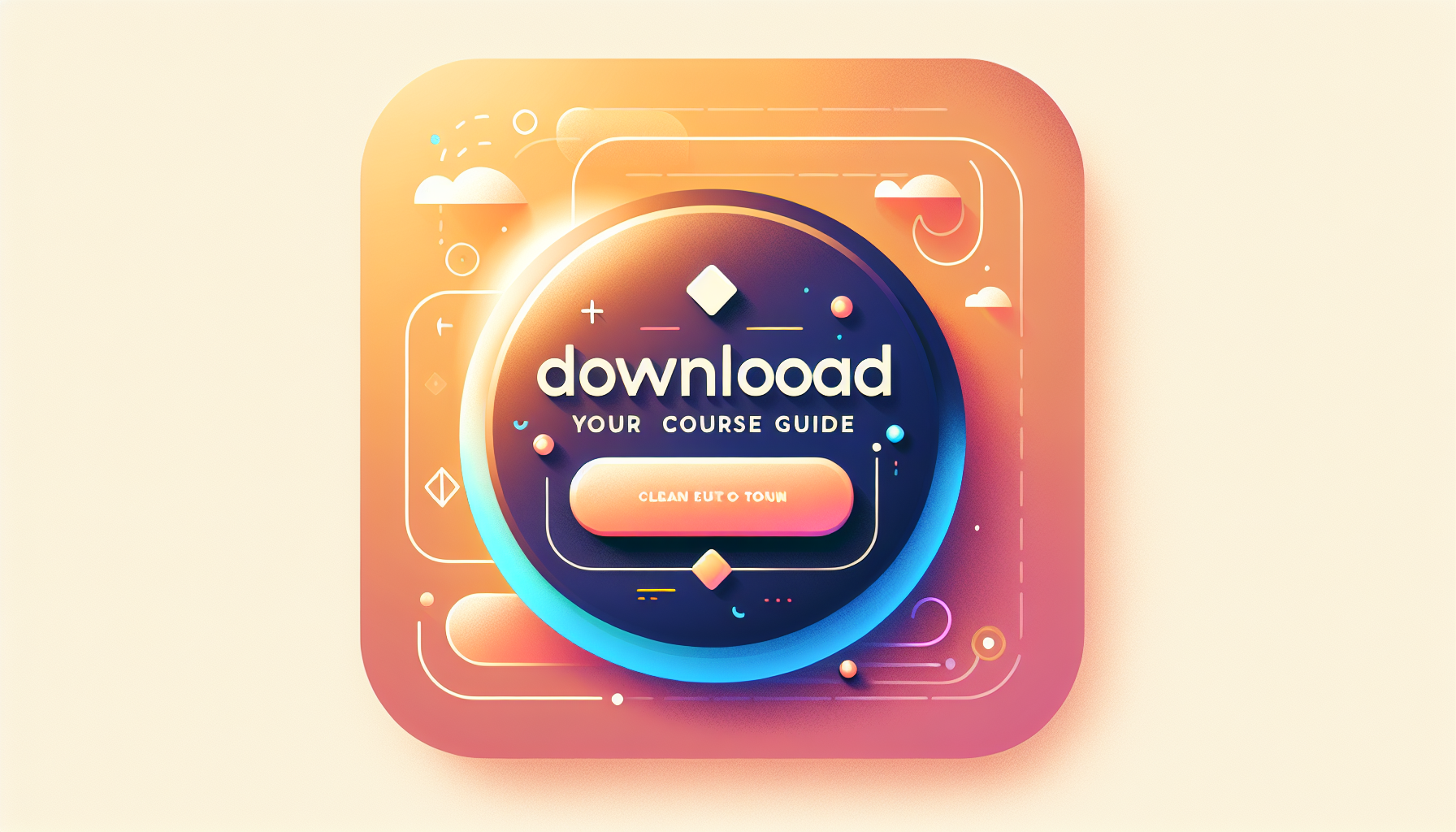Crafting compelling call-to-actions in course materials can feel like a daunting task. You might be wondering how to encourage learners to take the next step without sounding pushy or bland. It’s a common struggle for many course creators, and you’re not alone in feeling this way!
But here’s the good news: if you stick around and explore this guide, we’ll show you how to create effective CTAs that not only grab attention but also motivate learners to engage fully. You’ll learn strategies that can make your calls to action irresistible and effective.
From understanding the core elements of a strong CTA to optimizing them for maximum impact, we’ll cover everything you need to transform your course materials. Get ready to elevate your content and connect with your audience like never before!
Key Takeaways
- Make CTAs clear and concise, using direct language that tells learners exactly what to do.
- Use strong action verbs and create urgency to encourage immediate engagement.
- Place and design CTAs for visibility, using contrasting colors and prominent positions.
- Continuously test and optimize CTAs to improve performance based on audience response.
- Learn from effective examples of CTAs used by successful course creators.
- Maintain consistency and trust in your CTAs to build a recognizable brand voice.

1. Craft Effective Call-to-Actions for Course Materials
Creating effective call-to-actions (CTAs) is crucial in encouraging your audience to engage with your course materials. Think of a CTA as a friendly nudge that guides learners to take the next step, whether it’s signing up, exploring more information, or starting a trial.
When crafting your CTAs, aim for clarity and conciseness. Use short, direct language that quickly communicates the action you want your readers to take.
For example, instead of “Click here to begin your learning journey,” try “Start my free trial” to make it more appealing and personal.
2. Understand the Role of Call-to-Actions (CTAs)
So, what exactly do CTAs do?
They play a key role in guiding your audience’s actions, leading them from casual interest to committed engagement. They also help you measure the effectiveness of your content by tracking how many people respond to your prompts.
Effective CTAs can significantly boost click-through rates, improving overall engagement with your course offerings.
For instance, a well-placed button saying “Join the Community” can encourage newcomers to connect and interact with peers.
3. Identify Key Elements of a Strong CTA
If you want your CTAs to shine, focus on these key elements:
- Clarity: The action you want them to take should be crystal clear. Avoid jargon and be straightforward.
- Action-Oriented Verbs: Start with strong verbs like “Download,” “Join,” or “Start.” This directly prompts action and increases engagement.
- Urgency: Create a sense of urgency, like “Limited spots available!” to motivate your audience to respond quickly.
By weaving these elements into your CTAs, you can make them more effective at driving responses and enhancing user engagement across your course materials.

4. Focus on Clear Messaging in CTAs
Clear messaging is key in call-to-actions. When your audience sees a CTA, they should immediately understand what action they need to take.
Avoid ambiguity; use simple language that resonates with your audience.
Consider this: A CTA like “Unlock your learning potential” could confuse some. Instead, “Download your course guide” leaves no room for misinterpretation.
Using first-person pronouns can enhance clarity too. “Start my free trial” feels more inviting than “Start your free trial.”
Remember, the ultimate goal is to make the action feel easy and accessible, guiding users on their niche learning path.
5. Create Urgent and Emotional CTAs
Adding urgency to your CTAs can dramatically influence engagement. When your audience feels they might miss out, they are more likely to act quickly.
For instance, consider using phrases like “Limited time offer” or “Join now before spots run out!”
This sparks a sense of FOMO (fear of missing out) that can supercharge your conversion rates.
Emotional CTAs also work wonders. Think about the feelings your course taps into—whether it’s curiosity, excitement, or the desire for growth.
A CTA that reads “Transform your career today!” hits both emotional and urgent notes, compelling readers to take action immediately.
6. Design and Place CTAs for Maximum Impact
The design and placement of your CTAs matter just as much as the wording. Use contrasting colors and bold fonts to make sure your CTAs stand out.
For optimal visibility, place CTAs where they can’t be missed. At the end of a blog post, a prominent button can guide your audience seamlessly to the next step.
Consider also using pop-ups wisely. A well-timed pop-up can catch attention without being overly intrusive.
Testing different placements through A/B testing can help identify which spots garner the most engagement.
Remember, an attractive and strategically placed CTA can nudge your audience towards desired actions.
7. Test and Optimize Your CTAs for Better Results
Testing and optimizing your CTAs should be part of your ongoing strategy. A/B testing is an effective way to analyze the performance of different CTAs.
Try out different wording, colors, and placements to see what resonates most with your audience.
For example, changing the text from “Get started now” to “Start learning for free” might yield different engagement rates.
Track your click-through rates and engagement metrics to understand what works and what doesn’t. This feedback loop is essential.
Consistent tweaks based on data will allow you to refine your approach, driving better results over time.
8. Use Examples of Successful CTAs in Course Materials
Learning from successful examples can spark new ideas for your own CTAs. Take a look at how industry leaders create engaging CTAs.
For example, platforms like Udemy use clear, concise CTAs like “Buy now” or “Enroll today.” These are direct and to the point.
Consider how effective they are: short phrases, action-oriented verbs, and a clear next step for their audience.
Looking for inspiration? Check out different course websites and take note of CTAs that catch your eye.
Use these observations to brainstorm and experiment with your own course materials.
9. Maintain Trust and Consistency in Your CTAs
Trust plays a significant role in how your audience interacts with your CTAs. If your messaging feels inconsistent, users might hesitate to act.
Ensure that your CTAs align with the overall messaging of your course materials. They should reflect the same tone and intent.
For instance, if your course promises deep insights into a subject, your CTAs, like “Access exclusive tips,” should deliver on that promise.
Building trust means being transparent about what users can expect. If they feel guided and informed, they are more likely to engage positively.
Staying consistent also helps build a recognizable brand voice, making your CTAs feel familiar and reliable over time.
FAQs
A Call-to-Action (CTA) is a prompt that encourages users to take a specific action, such as enrolling in a course. CTAs are crucial as they guide users towards desired outcomes, enhancing engagement and conversion rates.
A strong CTA should be clear, actionable, and reflect a sense of urgency. Key elements include compelling language, a prominent position on the page, and alignment with user intent to drive desired outcomes effectively.
To test and optimize CTAs, conduct A/B testing with variations in wording, design, and placement. Analyze performance metrics like click-through rates and adjust based on user behavior to enhance effectiveness continuously.
Successful CTAs for course materials include phrases like “Start Your Free Trial,” “Join Now and Unlock Your Potential,” and “Download the Course Syllabus.” These clearly convey value and create urgency, motivating action.
